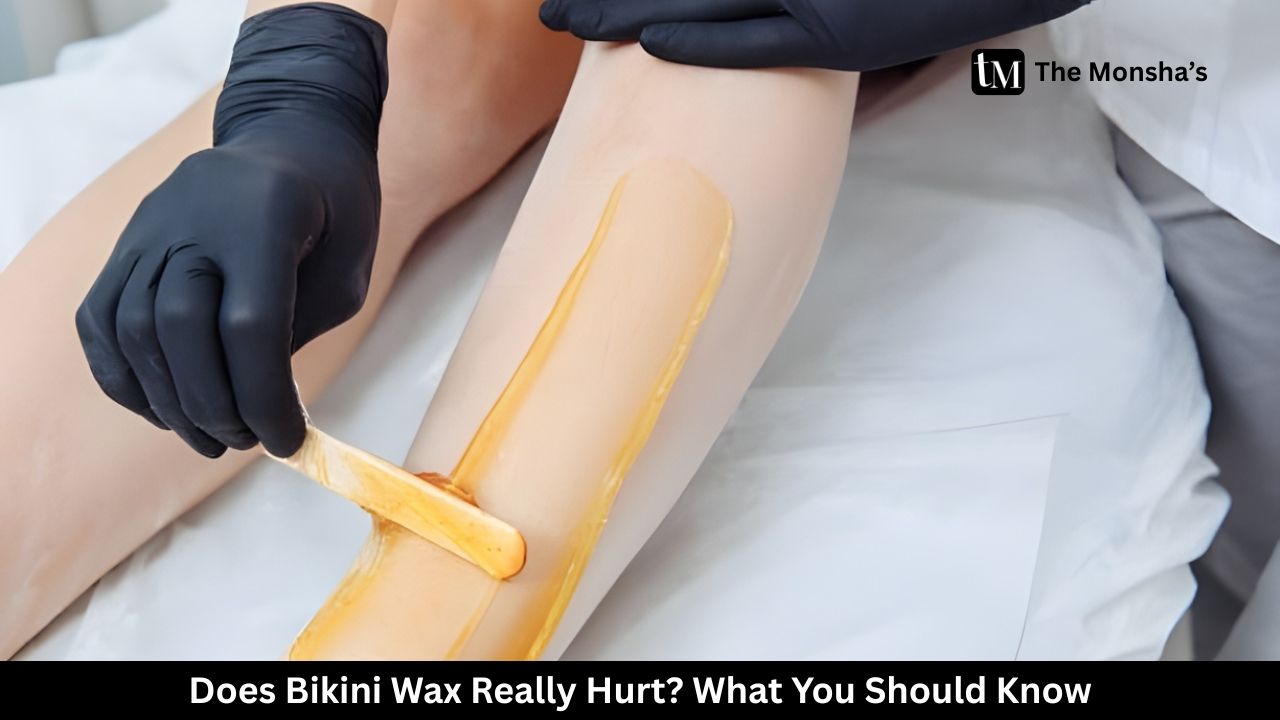
Yes — bikini waxing can hurt, especially the first few times. But with good prep, smart technique, and realistic expectations, the sting is brief. For many, the pain lessens over time. Use soft/hard wax wisely, communicate boundaries, and treat your skin kindly afterward.
By the time I dragged myself into the salon last week (after a grueling content deadline and zero sleep), I half expected to cry. The thought: “Does bikini wax really hurt that much?” haunted me. Spoiler: it can—but it doesn’t have to be torture.
If you’ve ever hesitated to get a bikini wax because of the fear — I feel you. This is your no-fluff, evidence-backed guide to what really happens, why, and how you can survive (and maybe even enjoy) the process.
Here’s what’s coming your way:
Let’s get real. 🩵
“Bikini wax” isn’t one size fits all. Some salons remove hair along the panty line only (outer bikini), others go deeper (full bikini), and then there’s Brazilian / Hollywood which get everything. Each deeper version tends to reach more sensitive skin.
Also, in humid places like Delhi or Mumbai, the heat + sweat make skin more reactive — what hurts “moderately” in air-conditioned zones might feel worse here.
Here’s the anatomy + neurobiology behind the ouch:
Interestingly, dermatology sources suggest that hard wax (vs strip/soft wax) tends to hurt less in sensitive areas because it adheres more to hair than skin. (“Hard waxes tend to hurt less than soft waxes.”) (Healthline)
Also, a health review of pubic hair removal complications reported cases of skin trauma, folliculitis, or bleeding especially when done by less skilled practitioners. (PubMed Central)
In one dramatic case, a trainee doing a Brazilian wax caused vulval bleeding and significant pain. That’s a caution: technique matters a lot. (Oxford Academic)
So yes — the discomfort is real, especially if any factors (poor technique, reactive skin, deep areas) stack against you.
Pain is subjective, but we can map a ballpark scale. Here’s a guide:


To give you a sense: the first time I got a full bikini, I graded it “7/10 pain” — sharp sting for a second, then fading. By session three, it felt more like a strong pluck than torture.
A clinic report says over time waxing becomes easier and less painful for many, as hair thins and sensitivity reduces. (Cleveland Clinic)
Another comparison: Brazilian waxing typically causes more intense but short-lived pain, whereas laser is described as milder (but longer) discomfort. (London Premier Laser & Skin Clinic)
So yes, it hurts — but not endlessly, and often less with experience.
In short: many things are within your control.
Here’s how I walk into it (with many bruises learned). You can refine it for yourself.
Before Your Appointment
During Waxing
Aftercare
If you notice swelling, prolonged pain, bleeding, or odd reactions, pause and consult a dermatologist.
Let’s compare how these methods feel, especially down there:

Many people say waxing is more painful in its moment, but the sting goes fast. Laser often feels less intense but lingers. Some salons have cooling attachments to buffer that. (London Premier Laser & Skin Clinic)
So pick your poison (or mix & match depending on zone).
Because our melanin-rich skin + heat + sweat + pollution bring their own quirks.
One salon insider tweeted (on TikTok) that many clients skip proper cleaning or come straight after gym — that leads to hygiene issues and more pain. (The Sun)
So prep + hygiene = your secret weapons.
These little stories remind us pain is real — but also conquerable.
Yes, bikini waxing can hurt. It’s sharp, momentary, and influenced by many factors. But for most, the pain is manageable and often lessens with experience. Be kind to your skin, demand good technique, prep smartly, and you’ll get smoother results without trauma.
If you must go in scared: pick a salon you trust, choose hard wax for sensitive zones, tell your esthetician your limits, and pamper your skin after.
Q: Does bikini wax hurt more than leg wax?
A: Almost always yes — because the skin is more sensitive, hair is coarser, and nerve density is higher.
Q: Will it hurt less if I wax again?
A: Probably. Many people report reduced discomfort over sessions as hair thins and skin adjusts. (Cleveland Clinic)
Q: Can I take painkillers or use numbing creams?
A: Light painkillers (like ibuprofen) often help. Numbing creams may help but must be used carefully (patch test, dermatologist advice)
Q: Which wax type hurts less in the bikini zone?
A: Hard wax is generally gentler for those sensitive areas because it doesn’t stick as much to the skin. (Healthline)
Q: How often can I get bikini wax safely?
A: 3–4 weeks is typical. Don’t rush — allow hair to regrow enough for effective removal.
Q: What if I get bruising, bleeding, or prolonged pain?
A: That’s a red flag. Pause waxing, apply soothing care, and see a skin professional.